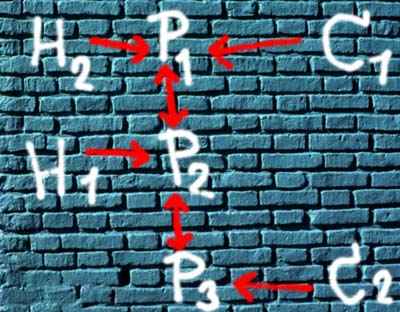|
|

design practice and theory
CLICK THE RED DOTS IN THE LOGO TO OPEN NEW PAGES AT RANDOM |
|
|

design practice and theory
CLICK THE RED DOTS IN THE LOGO TO OPEN NEW PAGES AT RANDOM |
|
|
|
|
|
|
updated: december 1999
 |
Caravaggio, Bacchus, 1595-1596
look at the original picture
or click this eccelent site
to
see many Caravaggio paintings
An example of structural analysis of a product
| Ergonomic elements | Elements of the product | Contextual elements |
| H1 = the hand of the user
H2 = the mouth |
P1 = the cup
P2 = the stem P3 = the foot |
C1 = the fluid in the glass
C2 = the tabletop |
The corresponding graph
 |
| The best way to construct a graph is to determine first 'the body'
to which al the specific elements are 'attached, in this case the
'stem'. In a car it would be the 'chassis'.
It is further advisable to work with groups of elements, like legs, knobs, etc., if there are to many of them and omitting the smaller ones, like screws, hinges, etc. The arrows indicate that a particular element is conditioned by the emitter of the arrow e.g. the mouth conditions the rim of the cup. Even if in some cases we can observe the conditioning of the ergonomic or contextual elements by components of the product, this is not the main reason for their particular function, positioning or form. The components of the products, being connected, are reciprocally conditioning. All the connection in the graph correspond to specific functions of parts or area's of the product. We can thus classify them as ergonomic, contextual and technologic functions. |
|
|
|
|
|
|